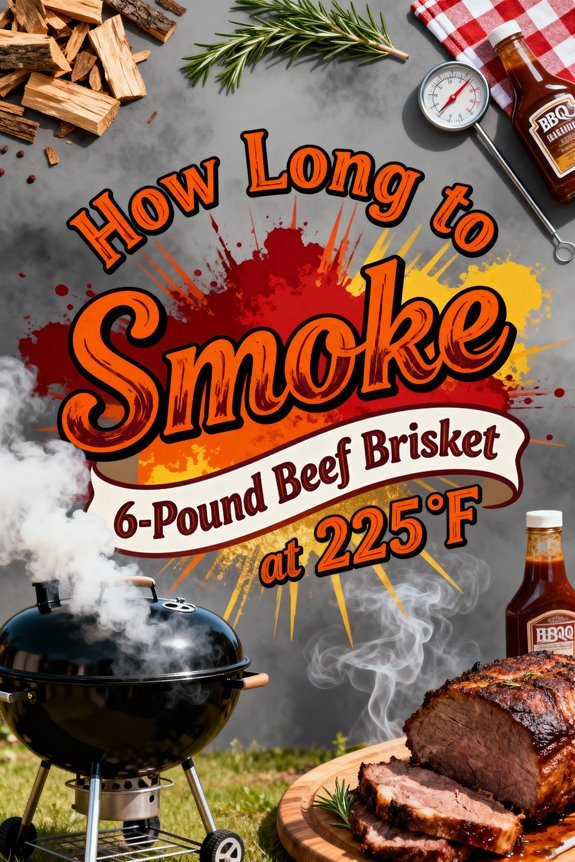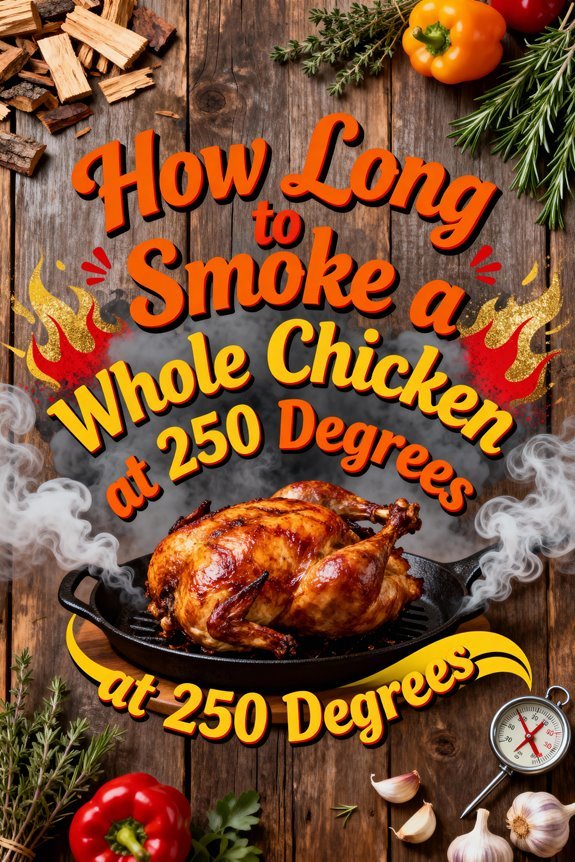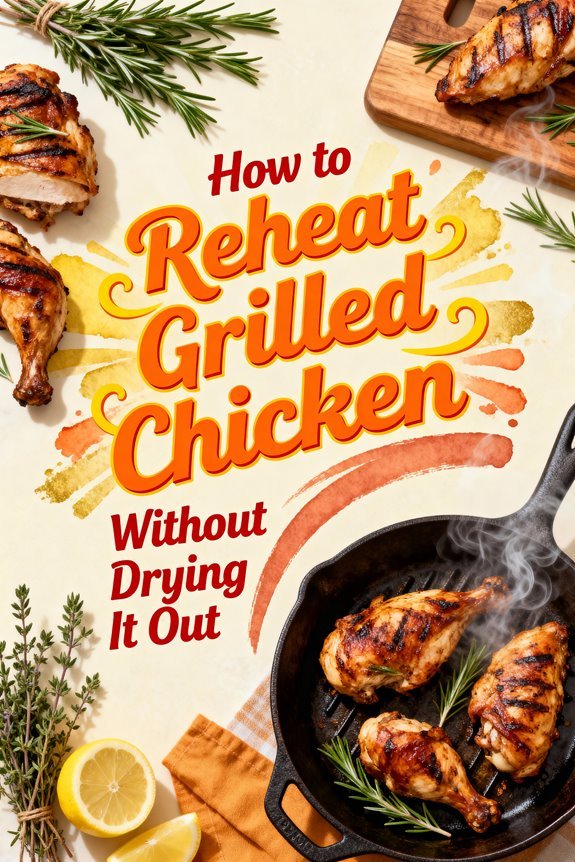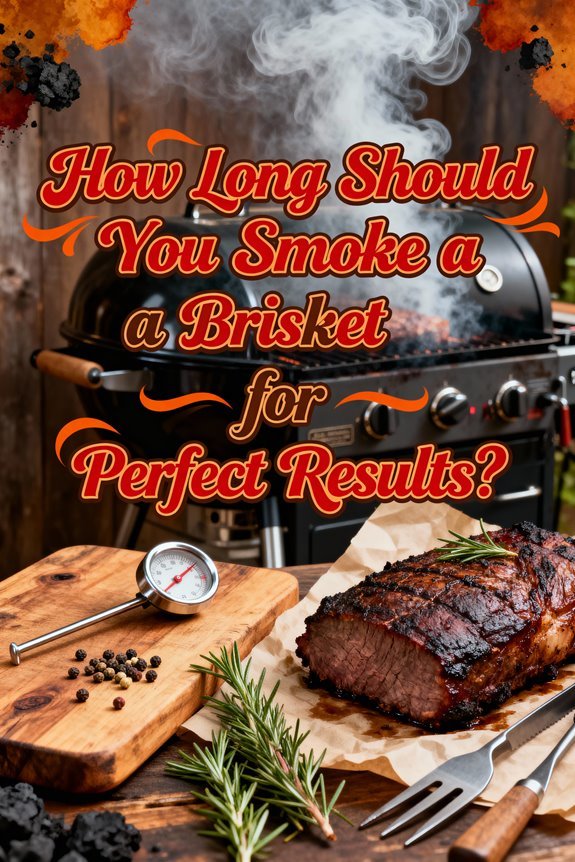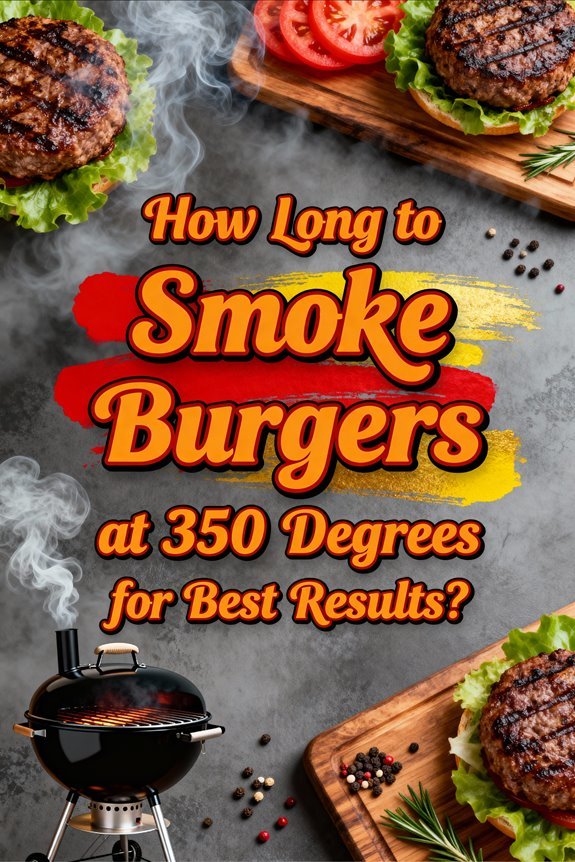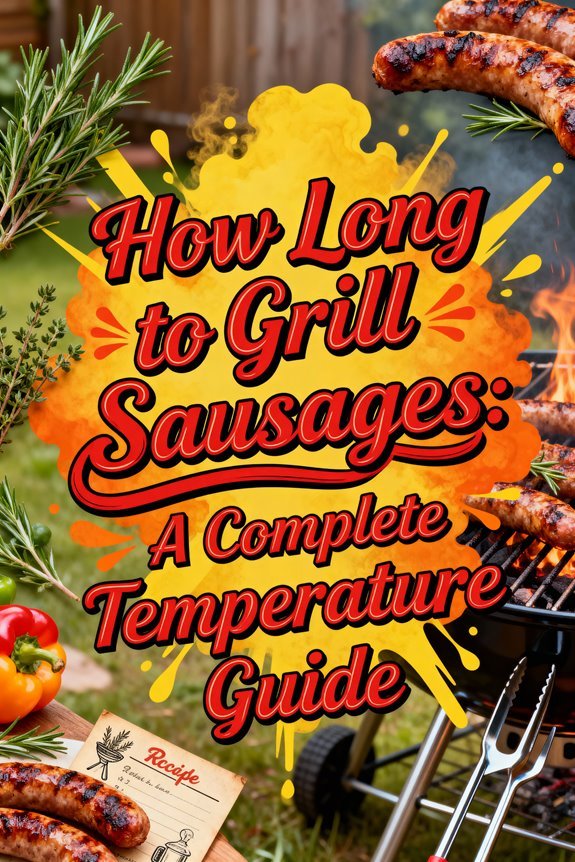Smoking a 6-pound brisket at 225°F will take you 9 to 12 hours, following the standard guideline of 1½ to 2 hours per pound. You’ll need to plan for the stall around 160°F, which can add several hours to your cook. Don’t rely solely on time—your brisket is done when it reaches an internal temperature of 200-205°F and passes the probe test. Factor in at least an hour of resting time before slicing. Understanding the variables that affect your timeline will help you plan more precisely.
Expected Smoking Time for a 6-Pound Brisket at 225°F
Before you start, apply your brisket rubs and allow at least 30 minutes to 1 hour of resting time after smoking. This guarantees maximum juiciness and proper texture development. Using a water pan setup helps maintain moisture throughout the long cooking process. You’ll likely encounter the stall period when the internal temperature reaches 150-160°F. At 225°F, plan for approximately 9 to 12 hours of total smoking time for your 6-pound brisket, following the standard guideline of 1½ to 2 hours per pound.
Why 225°F Is the Optimal Temperature for Smoking Brisket
Understanding the timing helps you plan your cook, but the temperature you choose determines whether that brisket turns out tender and flavorful or tough and disappointing. At 225°F, you’ll achieve ideal collagen breakdown without drying out the meat. This temperature provides enough heat to form the coveted bark texture through Maillard reactions while maintaining proper smoke intensity—you won’t get bitter over-smoking or weak flavor penetration. Lower temps like 180°F extend cooking times excessively and produce inadequate crust formation. Higher temps above 250°F dry out your brisket’s exterior before the interior tenderizes. The 225°F sweet spot gives you manageable cooking windows (roughly 1 to 1.5 hours per pound), consistent heat distribution, and proper fat rendering that carries smoky flavors throughout the meat. For briskets with little or inconsistent marbling, 225°F prevents the meat from becoming rubbery during the extended cook time. While smoking at 250°F temperatures can reduce cooking time significantly, the slower 225°F approach ensures maximum tenderness and optimal moisture retention. The butcher paper wrap technique during cooking helps maintain moisture while still allowing the bark to develop properly.
Understanding the Per-Pound Cooking Rule
When you map out your smoking schedule, the per-pound cooking rule serves as your baseline estimate, not your final answer. For a 6-pound brisket at 225°F, you’ll typically need 30 to 60 minutes per pound—roughly 3 to 6 hours total. However, thickness and fat distribution matter more than weight alone. A thick, compact brisket takes longer than a flatter cut of equal weight. Different cooking techniques like wrapping in foil (the Texas crutch) can shorten this window considerably. Your actual timeline depends on internal temperature reaching 200–205°F, not the clock. Pink butcher paper helps maintain the perfect bark texture while preserving moisture during the cooking process. The temperature stall phase can significantly extend cooking time as the meat’s internal temperature plateaus. Relying solely on weight risks overcooking or undercooking, which directly impacts flavor profiles and tenderness. Always use a thermometer to confirm doneness rather than trusting per-pound calculations blindly. After removing your brisket from the smoker, allow it to rest for at least 1 hour before slicing to retain its juices and maximize tenderness.
Internal Temperature Targets Throughout the Smoking Process
Since brisket doneness hinges on internal temperature rather than time alone, you’ll track specific heat milestones throughout the cook to gauge progress and adjust your approach. Start by stabilizing your smoker at 225°F, allowing your seasoning methods to develop flavor profiles as the meat gradually climbs to 130-140°F in the first few hours. Around 160°F, you’ll hit the stall—a frustrating plateau between 150-165°F where collagen breakdown slows temperature gain. Wrap in heavy-duty foil or butcher paper to push through this phase efficiently. A proper smoke bark formation should be visible before wrapping to ensure optimal texture and flavor. Using a water pan helps maintain consistent moisture levels throughout the smoking process. Continue cooking wrapped until your probe reads 203-205°F, then verify tenderness by checking resistance. The probe should slide through like soft butter, confirming proper collagen conversion and moisture retention for slicing. After reaching target temperature, rest the brisket wrapped for 6-7 hours in a cooler with towels to allow flavor and moisture retention before serving.
The Stall: What It Is and How It Affects Your Timeline
As you monitor your brisket’s climb toward that 203-205°F target, you’ll encounter one of smoking’s most misunderstood phenomena: the stall. Around 150-170°F, your meat’s temperature will plateau or even drop slightly, persisting for one to four hours. This happens because evaporative cooling from surface moisture counteracts the smoker’s heat, while collagen breakdown simultaneously absorbs energy during its transformation into gelatin. For your 6-pound brisket at 225°F, the stall duration greatly extends total cook time—often adding several hours you must account for when planning your meal. Similar to how reverse searing method creates perfect steaks, maintaining steady temperatures is crucial for brisket success. Using a remote thermometer helps track internal temperatures accurately without opening the grill and losing heat. Don’t panic when the thermometer refuses to budge around 160°F. This plateau is normal thermodynamics at work. Maintain your smoker’s steady temperature and resist raising heat prematurely, as patience during this phase guarantees proper tenderness. You can overcome the stall by wrapping the brisket in butcher paper or foil, a technique known as the Texas Crutch that prevents contact with cool air and helps push through the temperature plateau more quickly.
Wrapping Techniques to Speed Up Cooking
If your brisket has languished in the stall for two hours and you’re racing against dinner time, wrapping offers a proven path forward. The Texas crutch method delivers foil benefits by creating a sealed environment that traps moisture and pushes through temperature plateaus 30-50% faster. Aluminum foil maximizes speed but softens bark, while butcher paper maintains better bark development through its breathable texture. Similar to low and slow spare ribs that take 4-5 hours, careful timing and technique are essential for optimal results. You’ll achieve ideal results wrapping at 165°F internal temperature. Add ¼ cup beef broth before sealing to enhance moisture retention. The tight seal prevents moisture escape and maintains the steady cooking environment needed for even heat distribution. This cooking flexibility lets you adjust strategy mid-smoke—wrap tightly for speed, or delay wrapping until 170°F for crustier bark. Similar to honey-glazed hams, careful handling and wrapping helps preserve the meat’s presentation and moisture. Unwrap during the final 30 minutes to restore exterior crispness.
Factors That Can Extend or Reduce Cooking Time
Why does one 6-pound brisket finish in eight hours while another identical cut demands twelve? Meat quality drives this variance—higher marbling and connective tissue density extend breakdown time, while leaner, more uniform cuts cook faster. Your cooking techniques matter equally: consistent smoker temperature versus frequent fluctuations, cold ambient conditions versus controlled environments, and accurate probe placement versus guesswork all influence duration. Starting temperature affects initial heat penetration—room-temp brisket cooks faster than refrigerator-cold. Just like steady temperatures help maintain moisture when smoking turkey, maintaining consistent heat is crucial for brisket. Similar to how even warming prevents sogginess in reheated sandwiches, letting brisket reach room temperature before smoking ensures more uniform cooking. Trimming level impacts heat transfer; excessive fat insulates meat, prolonging cooking. The stall phenomenon, caused by evaporative cooling from moisture content, can add hours. Your smoker type and fuel stability, position inside the chamber, and experience controlling variables determine whether you’ll hit that target 190-205°F internal temperature efficiently or struggle through extended sessions. Brisket thickness ultimately dictates cooking duration more accurately than weight alone, since heat must penetrate to the center regardless of the cut’s length.
How to Monitor Brisket Doneness Accurately
Temperature readings alone won’t guarantee perfect brisket—you need multiple verification methods working together. Insert your digital instant-read thermometer into the thickest part of the flat, targeting 200°F to 208°F for ideal doneness testing. But don’t stop there—perform the probe test by sliding your thermometer through the meat with minimal resistance, like butter. Feel for that signature jiggly texture while ensuring the brisket still holds its shape. Similar to low and steady smoking temperatures for short ribs, maintaining consistent heat helps prevent the brisket from drying out. Check multiple spots since temperature can vary throughout the cut. The bark should appear dark and crisp, while the fat cap renders properly without excess moisture. After removing the brisket from heat, rest the meat to allow juices to redistribute throughout, which enhances the overall texture and moisture retention. Like with indirect heat grilling for ribs, positioning your brisket away from direct flames ensures even cooking throughout. Temperature monitoring combined with tactile feedback and visual cues gives you the complete picture of true doneness, preventing both undercooking and over-tenderness.
Resting Your Brisket After Smoking
Your perfectly smoked brisket needs time to finish its transformation off the heat. Ideal resting allows muscle fibers to relax and juices to redistribute throughout the meat. Wrap your brisket in foil or butcher paper, then insulate it with towels inside a cooler—this “faux cambro” method maintains temps above 130°F for safe, extended resting. Much like the 3-2-1 method for smoking ribs, proper timing is crucial for optimal results.
Rest your 6-pound brisket for at least one hour, though two to three hours delivers superior moisture retention. During this period, connective tissue reabsorbs moisture pushed outward during cooking, preventing juice loss when you slice. Collagen continues to gelatinize during the resting phase, further enhancing the meat’s tenderness. You can safely rest for up to four hours using proper insulation techniques. Just as regular maintenance of your grill prevents buildup and ensures better cooking results, proper resting time guarantees optimal brisket quality.
Don’t rush this important step—resting fewer than 30 minutes guarantees excessive moisture loss. The result? Juicier slices with enhanced tenderness and bark texture.
Planning Your Smoking Schedule for Best Results
When mapping out your brisket cook, start by working backward from your target serving time—this reverse-engineering approach prevents the all-too-common scenario of hungry guests waiting on undercooked meat. For a 6-pound brisket at 225°F, allocate 9-12 hours of smoking time, plus an additional 2-4 hours for the inevitable stall. Factor in 30-60 minutes for brisket preparation (trimming and seasoning) and another hour for post-smoke resting. That’s potentially 16 hours total. Begin your cook early morning or even the night before for next-day serving. These smoking essentials aren’t negotiable—temperature monitoring trumps clock-watching every time. Build in buffer time rather than cutting it close; a properly rested brisket held in a cooler maintains quality far better than rushed meat. Similar to grilling burgers, using a meat thermometer is crucial for achieving the perfect internal temperature. If serving within the hour, let your brisket rest at room temperature instead of using insulated storage. Like smoking tri-tip, maintaining a consistent smoker temperature throughout the cooking process is essential for optimal results.

